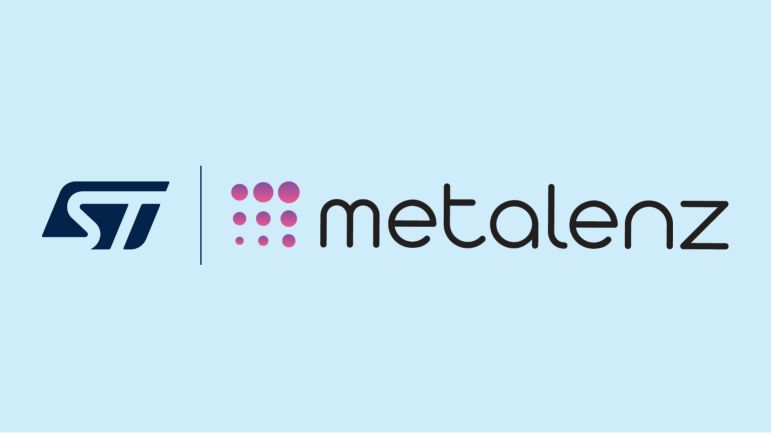STMicroelectronics Signs New Licensing Agreement with Metalenz to Accelerate Adoption of Metasurface Optics Technology
2025-07-11 09:50:11 921
From biometric authentication, lidar, and camera-assisted applications in smartphones to robotics, gesture recognition, and object detection, the new licensing agreement will accelerate the adoption of metasurface optical technology in large-scale markets such as consumer electronics, automotive, and industrial applications.
The agreement expands ST's scope for using Metalenz's intellectual property to produce advanced metasurface optical components, while leveraging ST's proprietary technology and manufacturing platform to integrate the production, testing, and certification of 300mm semiconductor and optical components.

Figure. 1
July 10, 2025, China – STMicroelectronics (ST), a leading global semiconductor company serving multiple electronic application fields, and Metalenz, the pioneer of metasurface optical technology, announced the signing of a new technology licensing agreement. The agreement expands STMicroelectronics' capabilities to produce advanced metasurface optical components using Metalenz's intellectual property, while leveraging STMicroelectronics' proprietary technology and manufacturing platform to integrate the production, testing, and certification of 300mm semiconductor and optical components.
Alexandre Balmefrezol, Executive Vice President and General Manager of STMicroelectronics' Imaging Division, emphasized: "Currently, STMicroelectronics is the only company in the market capable of providing groundbreaking integrated optical and semiconductor technology. Since 2022, the shipment volume of our FlightSense™ modules produced using Metalenz IP has exceeded 140 million units. The new licensing agreement with Metalenz not only reinforces our technological advantages in consumer electronics, industrial, and automotive sectors but also enables the expansion of ultra-light technology from smartphone applications such as biometrics, lidar, and camera assistance into new fields like robotics, gesture recognition, or object detection. Our unique model of manufacturing optical components in 300mm semiconductor fabs ensures high detection accuracy, cost-effectiveness, and scalability, meeting customers' needs for developing large-scale complex applications."
Rob Devlin, co-founder and CEO of Metalenz, stated, "Our licensing agreement with STMicroelectronics is expected to further accelerate the adoption of ultra-light technology. This innovative technology, originating from Harvard University, will be recognized and adopted by competitive consumer electronics companies in the market. Outsourcing the manufacturing of optical components to semiconductor manufacturers may further reshape the sensor ecosystem landscape. As 3D depth sensing applications continue to expand, the combination of STMicroelectronics' technical leadership in the emerging ultra-light market and our strengths in IP will solidify both parties' market leadership positions."
The new licensing agreement aims to capitalize on the growing market opportunities for metasurface optical devices. The market is expected to see significant growth by 2029, reaching a size of $2 billion*, driven by the technology's critical role in emerging display and imaging applications. (*Yole Group, Optical Metasurfaces, 2024 report)
Notes
In 2022, Metalenz's metasurface optical technology made its debut with STMicroelectronics' direct time-of-flight (dToF) FlightSense module. As a spin-off from Harvard University, Metalenz holds the exclusive license to Harvard University's foundational metasurface optical technology patents.
Replacing traditional lens assemblies composed of multiple lenses with metasurface optical lenses enhances the optical performance and temperature stability of the FlightSense ranging module while reducing size and complexity.
Manufacturing lenses using 300mm wafers ensures high precision and performance while fully leveraging the inherent scalability and robustness advantages of semiconductor manufacturing processes.




